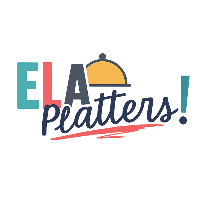Let’s face it—keeping ELA students motivated can feel like herding cats! They crave variety, excitement, and instant feedback. That’s where quick-win activities swoop in like superheroes. They’re fast, effective, and downright fun ways to check learning while sparking engagement.
Why Quick-Win Activities Matter in ELA
In a world full of TikToks and instant messages, attention spans are shrinking faster than you can say “homework.” Quick-win activities match this pace, giving students bite-sized opportunities to shine and learn without feeling overwhelmed.
Benefits of Quick Assessments in the Classroom
-
Immediate Feedback: You catch misunderstandings before they become habits.
-
Student Confidence: Success breeds motivation and self-esteem.
-
Classroom Energy Boost: A lively activity can transform a sluggish room.
-
Efficient Use of Time: You maximize every precious teaching minute.
Key Principles for Effective Quick-Win Activities
-
Keep it simple. Overcomplicating kills the “quick” in quick-win.
-
Make it purposeful. Every activity should align with your learning goals.
-
Engage everyone. No wallflowers allowed—design activities so all students participate.
-
Reflect and adjust. Use results to tweak your teaching plans in real-time.
Warm-Up Challenges to Start the Lesson
5-Minute Writing Prompts
Kick off class with a thought-provoking question or image. Students free-write for five minutes—no overthinking, just pure creativity flowing onto paper.
Word of the Day Exploration
Pick an unusual word. Students guess the meaning, use it in a sentence, or create a mini-story around it. Vocabulary + imagination = win-win!
Exit Tickets to Gauge Understanding
One-Minute Summaries
At the end of the lesson, students write a quick summary of what they learned. You’ll spot who’s onboard and who’s still adrift.
Muddiest Point Cards
Ask, “What was the muddiest (most confusing) point today?” Students jot it down anonymously. Instant roadmap for your next lesson!
Creative Peer Review Activities
Two Stars and a Wish
After peer-reviewing a partner’s work, students highlight two things they loved (stars) and one suggestion for improvement (wish).
Peer Editing Bingo
Create bingo cards with editing tasks like “Check for run-on sentences” or “Highlight strong verbs.” Fun meets functionality.
Mini-Debates for Instant Critical Thinking
Pick a spicy topic (“Is homework outdated?”) and divide the class into teams. Give them 3 minutes to prep and 2 minutes to debate. Lightning-fast and electrifying!
Speed Discussions to Encourage Participation
Set a timer for 30 seconds per student to answer a discussion question. Rotate quickly to ensure everyone speaks. Think of it like speed dating… but for ideas!
Pop-Up Grammar Games
Grammar Auction
Students “bid” on sentences they think are grammatically correct. It’s learning meets Las Vegas!
Sentence Surgery
Give students “sick” sentences with mistakes. Their job? Be the doctors who fix them, stat!
Vocabulary Quick Challenges
Vocabulary Charades
Students act out new vocabulary words without speaking. Their classmates guess. Hilarity (and learning) ensues.
Word Association Chains
Start with one vocabulary word. Students rapidly add related words. Great for building word webs and mental connections.
Short and Sweet Reading Comprehension Checks
3-2-1 Strategy
After reading, students jot down:
-
3 things they learned,
-
2 interesting facts,
-
1 lingering question.
Quick snapshot of comprehension!
Character Speed Dating
Assign characters from the text to different students. They “speed date” each other, answering questions as their character would. Creative and memorable!
Rapid Research Projects
Give students 10 minutes to research a topic and present a lightning talk. Teaches critical research skills without dragging it out for days.
Flash Fiction Contests
Challenge students to write a complete story in 100 words or less. It’s creativity on steroids—and perfect for a quick brain workout.
Tips for Successful Implementation
-
Model first. Don’t assume students know what to do.
-
Set clear time limits. Deadlines create urgency and excitement.
-
Celebrate effort. Praise creativity, even if answers aren’t perfect.
-
Mix it up. Variety keeps students on their toes.
Common Mistakes to Avoid
-
Overloading activities. Keep instructions crystal-clear and activities bite-sized.
-
Ignoring feedback. Use what you learn from quick-wins to shape future lessons.
-
Forgetting the fun. Quick-wins should energize, not exhaust!
Adapting Quick-Win Activities for Different Grades
-
Elementary: More visual and movement-based activities.
-
Middle School: Layer in peer interaction and competition.
-
High School: Emphasize analysis, critical thinking, and real-world connections.
Conclusion
Quick-win activities aren’t just another item on your teacher to-do list—they’re the secret weapon for making ELA lessons faster, smarter, and way more fun. They energize your classroom, spotlight student needs, and make learning a game worth playing. So why wait? Sprinkle in some quick wins this week and watch your students—and your classroom vibes—soar!
FAQs
1. What are quick-win activities?
Quick-win activities are short, engaging tasks designed to assess learning or build skills without taking up an entire lesson period.
2. How often should I use quick-win activities?
You can use them daily! Try starting class, ending class, or breaking up longer lessons with a quick-win.
3. Do quick-win activities work for virtual classrooms?
Absolutely. Many activities like 3-2-1 summaries or mini-debates adapt easily to online tools like Zoom or Google Classroom.
4. What if my students resist quick activities?
Start small, explain the benefits, and most importantly—make them fun! Students usually warm up quickly once they see the energy boost.
5. Can quick-win activities replace traditional assessments?
Not entirely, but they can supplement bigger tests and papers by giving you continuous insight into your students’ understanding.

